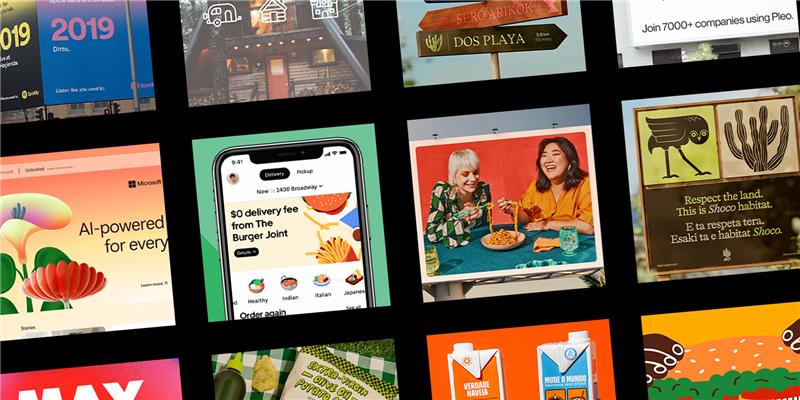
Delight your audiences as they move through the journey to purchase with creative that matches their intent, aligns with strategic insights.

Last year saw the rise of ‘bait headlines’. Our social feeds were flooded with them, taunting us to click through and become lost in the infinite maze of “this is awesome!” headlines. Reputable brands along with news sites were quick to jump aboard this trend, running jaw-dropping titles (often sponsored) that couldn’t help but pique our interest. But when we clicked through, the articles were far from awesome, often having very little bearing on the words that had drawn us in. In fact, this manipulative and cheap technique irked me so much at the time that I wrote a post venting my displeasure and frustration, which can be found here. Unfortunately, we were (and still are), drowning in a sea of poorly researched content, extremely lacking in originality and quality.
Much of this can be attributed to the demise of formal training in the art of writing. It’s a well known fact that over the years, the number of journalist posts have been in sharp decline, while remuneration for written content has followed a similar trend. According to some estimates, by now you’ve read at least one article that was written by a robotic algorithm, probably without noticing. Consequently, brands particularly have been churning out dire, shallow content, and the overall quality of the written word online has suffered. But this is a trend that can’t go on for much longer, and in order for brands and websites to keep their followers and readers’ attention and loyalty, more original and authentic content will need to resurface. Nothing is likely to change quickly, but in 2016 we may see the beginning of a shift back towards the creation of more pithy, original narratives. Brands will begin to think less about the commercial aspect of content. Quality of content will matter over quantity, and only the best will survive. In particular, we are likely to see online content evolve in some of the following ways…
Google’s Knowledge Graph has taken a few years to mature, but now it is something truly helpful, appearing for the vast majority of long-tail searches and providing users with the answers they are looking for. Digital assistants like Siri and Cortana are also attempting something similar. Consequently, this is reducing the likelihood of searchers clicking on websites displayed within search results, which would originally have been their destination, as there is simply no need. Traffic to web pages that provide quick answers is therefore starting to diminish, and this will force brands to build content around more complicated and in-depth topics.
The written word is incredibly saturated online and so increasingly, we’re seeing demand for visual content rise. According to latest figures from the IAB, the average UK home is now a hotbed of 7.4 connected devices. Second-screening is common practice, and smartphones have become the hub of our daily lives. There are no longer the restrictions on internet speeds and 4G that have hampered video efforts previously, and this hyper-connectivity has heralded an age of impatience and attention deficit, where consumers want instant access to more visual forms of content.
Original Source Video-streaming companies such as Netflix and Amazon have already weakened the hold of TV broadcasters, creating ample opportunity for brands to get in on the act. Over the next year or so, we’re likely to see brands creating short, content rich and specialist videos, which can be watched on the go.
Subscribe to our monthly newsletter.
We’re currently facing a saturation of online content, and so for some brands it may make more sense to become content curators, than content creators. Increasingly, audiences will turn towards names that they trust to bring them the best in online content, from myriad sources. As consumers turn away from the bait headlines in their social timelines and desire higher quality content, brands will begin to programme a mix of their own professionally created content, along with a curation of other stories.
Over the past couple of years, we’ve seen more and more brands align themselves with social media influencers. This comes off the back of consumers expressing increasing preference for ‘authentic’, trusted opinion, over and above the voice of the brand itself. But in 2015 particularly, the relationship between brand and influencer became increasingly commercial. Top tier influencers came to demand higher forms of monetary reward for their time and effort, and brands woke up to the power online influencers can have in driving sales, and shifting product. This relationship lacks authenticity, and consumers will turn their backs on content that has been ‘bought’. It’s a situation that can’t be sustained, and we’re likely to see a shakeup, with truer forms of collaboration taking place between the brand and influencer.
According to recent research by Ofcom, a third of internet users now see their smartphone as the most important device for going online. Moving forward, brands will have no choice but to take a mobile-first approach towards content; one size will no longer fit all. Brands will need to create content according to a device-specific approach, to enable device-hopping mid task, and to ensure audiences receive a consistent brand experience.
Delight your audiences as they move through the journey to purchase with creative that matches their intent, aligns with strategic insights.
Delight your audiences as they move through the journey to purchase with creative that matches their intent, aligns with strategic insights.
Subscribe to our monthly newsletter.